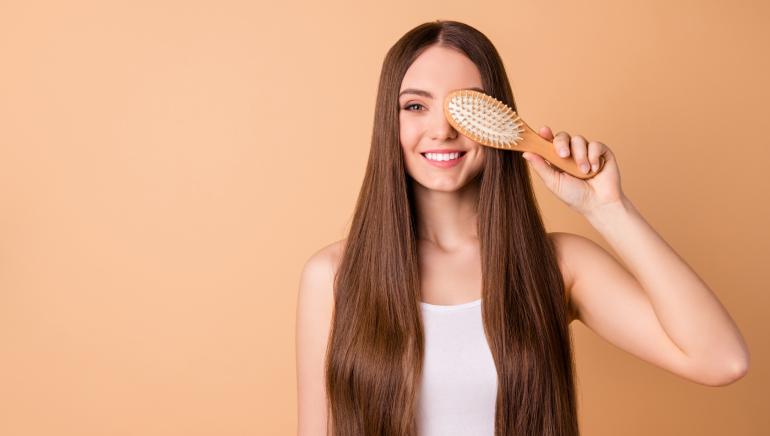Hair Care Guide – How To Care For Your Hair?
Hair care is particularly important in the summer when you tend to sweat and need to wash your hair frequently. Although it is said that hair is born good or bad, even if you are not born with good hair, it is important to achieve the best possible level of your own genetic design, rather than leaving it messy and untidy.

The order of shampooing (long hair)
1. Comb your hair before shampooing
Combing before wet hair helps to reduce tangles, and combing with dry hair has relatively little friction and low damage to the hair phosphorus. Don't comb your hair after wet hair, otherwise, it will be easy to break hair and lose hair.
2. Use shampoo to massage the scalp
Use shampoo 2 times to cleanse the scalp more effectively. And the second time you wash your hair, the foam will be richer. It's common sense not to scratch your scalp with your nails, but to massage it gently with your fingers. Also, the water should not be too hot, just below 40 degrees.
3. Use a hair conditioner or hair mask
Squeeze as much moisture out of your hair as possible, and apply and massage for a few minutes from the middle to the end of your hair to effectively enhance the deposition of nutrients. You only need to use one of these, not both, for reasons that will be mentioned later.
4. Rinse
People generally use warm and hot water to wash their hair, in fact, to give it a shine boost and a little tip. It is to use cold water to rinse again at the end, if you are afraid of cold, only rinse the middle part of the hair to the end, this can make the hair phosphorus close quickly, but also strengthens hair.
5. Blow dry your hair
It is best to use an absorbent towel to gently press dry your hair (sports brand swim towels are recommended!!) Do not rub your hair as hard as possible, as it will be more likely to tangle and damage your hair. If you don't have enough time to wait for your hair to dry, use a hairdryer on a low setting to blow dry your hair at the roots, and wait for it to dry slowly.
6. Apply leave-in oil
Once your hair is 60% dry, you can apply the oil and massage it in as you go. Allow the oil to coat the hair with moisture so that it remains moist after drying. Don't worry about it being oily, it will just flow when it dries!!!
After all the above is done, basically as long as the product choice is not too blind, the hair can be relatively good, personally compared and tested.
The choice of hair care products
The degree of hair damage is divided into 3 levels to facilitate diagnosis and differentiation.
1. Light damage, characteristics: hair began to have a little dull, yellowing.
2. Moderate damage, characterised by the hair starting to feel brittle, lacking in toughness, hair feeling a little dry and lacking in moisture.
3. Severe damage, characterised by: hair that feels noticeably coarse and dull, lots of frizz, feels particularly dry when washed, tangles badly and ends start to split.
Once you know the level of damage to your hair, here's how to select various hair conditioners.
1. Mildly damaged hair, this type of hair requires a few products with a low level of care, mainly to prevent damage in the next step. When choosing a product, we can choose something in gel form (gel) that claims to be suitable for low-damage hair. Alternatively, we can look at the full ingredient list and choose products that are silicone-free and mineral oil-free, as silicone oil and all types of mineral oil are indeed good value for money as the most commonly used hair conditioners today. However, for low-damage hair, we use them sparingly without knowing the exact amount they add. Cations and fatty alcohols alone are more than adequate.
2. For moderately damaged hair, there are more products available for this type of hair, and all the common moisturising and hydrating products on the market can be used. In terms of the full composition, you can use some behenyl trimethyl ammonium chloride products that are less irritating than cetyl trimethyl ammonium chloride and octadecyl trimethyl ammonium chloride. Silicone oil and mineral oil do not need to be overly concerned about the situation, mainly based on their own experience to choose products, an application should be easy to spread, and after rinsing do not have a sticky, blow-dried hair naturally smooth, not frizzy, not because of excessive deposits caused by hair collapse, and not because of insufficient care and messy stilted hair is appropriate. 3) Heavy damaged hair, for this type of hair, the hair can be said to have reached a very sick, dying. The hair is in its final stages. You can start using products that claim to be highly conditioning. Most of these products have higher cationic content and use a wider variety of silicone oils, combined with various polymers for repair purposes. You can use some essential conditioners in tubes, avoiding the scalp and rinsing well.
